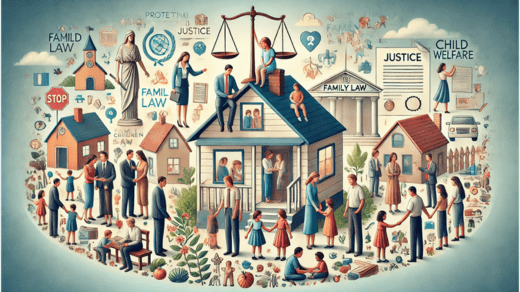1–5: Marriage and Divorce
Prenuptial Agreements
Problem: Conflicts about property or other financial arrangements before marriage.
Solution: Courts will honor valid agreements provided they were voluntarily entered into and meet legal requirements.
Contested Divorce
Problem: One party contests the ground or terms of the divorce.
Solution: A court will resolve the matter using evidence, but it will examine fault grounds or evidence of irreconcilable differences.
Read Also:
- https://insightfullawhelp.com/25-common-family-law-questions-answered-for-couples/
- https://insightfullawhelp.com/30-divorce-and-custody-questions-answered-by-lawyers/
- https://insightfullawhelp.com/40-family-law-scenarios-and-their-legal-implications/
Uncontested Divorce
Problem: Both parties consent to all provisions of the divorce.
Solution: The process takes place rapidly upon filing of papers, often requiring no court appearance.
Issue: Annulment on grounds of fraud, incapacity, or coercion in entering into marriage.
Resolution: Courts annul marriages when there is a fulfillment of legal grounds.
Division of Property
Issue: Distribution of marital assets and debts.
Resolution: Courts employ equitable distribution or community property according to the law of the state.
6–10: Child Custody and Support
Child Custody Conflicts
Issue: Parents are unable to agree on custody arrangements.
Resolution: Courts prioritize the child’s best interests, considering factors like stability, parenting abilities, and the child’s wishes (if appropriate).
Child Support
Issue: Determining financial support for a child.
Resolution: Calculated using state guidelines based on income, custody arrangements, and the child’s needs.
Parental Relocation
Issue: A custodial parent wants to move with the child, affecting visitation.
Resolution: Courts evaluate the move’s impact on the child and the non-custodial parent.
Visitation Rights
Problem: Access to the child by the non-custodial parent.
Solution: Courts establish a visitation schedule so that the child spends time with both parents.
Grandparent Visitation
Problem: Grandparents want visitation rights.
Solution: Courts award visitation when it is in the best interests of the child, as determined by state laws.
11–15: Domestic Violence and Protection Orders
Domestic Violence
Problem: Abuse or threats between family members or household members.
Resolution: Courts issue protective orders and may impose criminal penalties on the abuser.
Restraining Orders
Issue: Protecting a family member from harassment or harm.
Resolution: Courts issue orders restricting the abuser’s contact with the victim.
Child Abuse Allegations
Issue: Claims of abuse or neglect against a parent or guardian.
Resolution: Child protective services investigate, and courts may modify custody or impose protective measures.
Spousal Abuse
Issue: Physical, emotional, or financial abuse by a spouse.
Resolution: Victims can file for restraining orders, and courts address safety in divorce or custody proceedings.
Emergency Custody Orders
Issue: Immediate danger of harm to a child.
Resolution: Courts provide temporary custody for the protection of the child and then hold a full hearing.
16–20: Adoption, Guardianship, and Paternity
Adoption
Issue: Formalizing the relationship between a child and adoptive parents.
Resolution: Courts finalize adoptions after ascertaining that the adoptive parents are suitable and the best interest of the child.
Step-Parent Adoption
Issue: A step-parent seeks legal parental rights.
Resolution: Needs consent of the other biological parent or termination of their parental rights.
Guardianship
Issue: Appointing a guardian to care for a child or incapacitated adult.
Resolution: Courts appoint guardians based on the person’s needs and the guardian’s suitability.
Paternity Disputes
Issue: Establishing or disputing a father’s legal relationship with a child.
Resolution: Resolved through DNA testing and court orders.
Surrogacy Agreements
Issue: Conflicts over parental rights in surrogacy contracts.
Solution: Courts will enforce valid agreements or determine parentage under state laws.


